How To Ride A Motorcycle On The Highway Safely

For many new riders, the thought of riding on the highway for the first time can be frightening – right up there with public speaking and bungee jumping. The higher speeds and sea of cars around you can seem intimidating, but riding on the highway doesn’t have to be scary. In fact, highway riding is probably safer than scrambling around on surface roads, since everybody’s going the same direction at more or less the same speed, and, critically, there’s no cross traffic to dodge. Before you go tackling the freeway with confidence, here are a few tips we’ve gathered over the years for how to ride on the highway safely.
The obvious first step for riding on the highway is entering the highway. Being on most motorcycles gives you the benefit of being able to accelerate faster than nearly any car around you. Use this to your advantage to get up to speed with highway traffic and merge with surrounding cars as quickly as possible. Just as you would do in a car, when merging with traffic, don’t simply rely on your mirrors to view traffic behind you – do a quick head check to make sure there’s room for you. Another beauty of the motorcycle is it has no blind spots. And don’t forget to use your indicators – whatever you can do to grab the attention of other motorists and let them know your intentions is worth doing; sticking out a foot in your intended direction of travel for some reason seems to get their attention.
Once on the highway, we like to stay in the left lanes, where there’s less merging going on and where we can access the carpool lane if the freeway has one. Going slightly faster than the flow of traffic is how most of us like to ride. Coming up behind most cars, instead of having most of them come up behind you, just feels safer. Being rear-ended means much more than a scratched bumper if you’re on a motorcycle, and rear-end collisions are one of the most common freeway accidents. Moving faster than the flow also minimizes the time you’re in the blind spots of cars around you and gives you an advantage when it comes to seeing what’s ahead and planning accordingly.
If you prefer to take it slower, that’s fine too, but keep more in the right lanes so faster traffic can pass on your left – and you’ll need to keep an eye on your mirrors even more often, like, a glance every four or five seconds. Having good, properly adjusted mirrors on both sides of your bike with a view that lets you see what’s going on behind you on both sides is critical to long-term freeway survival. If a car or truck grows uncomfortably close behind you, use your turn signal and merge right into the next lane. Wave the tailgater on by. Expressing displeasure or anger to thoughtless drivers via hand signals is a very bad idea on a motorcycle. Just let it go.
No matter which lane you’re in, it’s best to stay in either the left or right portion of the lane – where car tires track. The center of the lane is more likely to be dirty with debris or oil deposits, and your field of vision between the lines of cars ahead of you is much better if you’re toward the edge of your lane. In California and most civilized countries, we’re blessed with the right to lane split. Even if you live in a place where lane sharing isn’t legal, riding at the side of your lane means you’re always ready to use the space between the cars ahead of you as an escape route should you hear the squeal of tires behind you. Also, when you’re just rolling along, being at the side of your lane psychologically tells the car next to you that this is your turf. Keep out.
If you find yourself riding in the middle of the lane, please allow plenty of distance between your bike and the vehicle ahead. Probably the most dangerous part of freeway riding is obstacles that suddenly appear in your path; mangled aluminum ladders, rakes, gas jugs, and disintegrating kitchen tables are just a few things that have jumped out from under cars ahead of us. You’ll generally get forewarning when the car ahead of you swerves, hits the brakes, and freaks out. Make sure you have plenty of room to take evasive action when that happens. If you’re behind a bus or truck, it might just run the object over and spit it out with no warning – the best reason not to follow behind large vehicles.
After dark, it’s even more important to leave room ahead and not go faster than your headlights, especially if there’s no traffic ahead of you to warn of obstacles in the road. Having a burned-out taillight during the daytime is an inconvenience; having one after dark could be the end of you. If you’ve got an older bike, especially, make absolutely certain your tail and brake lights are burning bright.
Rain grooves are another source of stress in some parts of the country. Some tires, mostly ones with big tread grooves running circumferentially down their centers, will track along the rain grooves, giving your bike the same sort of woozy, unstable feeling you get when riding through sand, or riding with a flat. Try not to freak out if this happens; maintain a steady throttle and grip the bike more with your legs than your hands, and you’ll be fine. If it’s really bad, pull over when it’s safe and make sure you don’t have a flat.
If you’re lucky enough to live somewhere that allows lane sharing, we prefer to filter through cars when traffic is slow or stopped. The best time to filter is when cars are side-by-side in their respective lanes. Then, drivers have to see each other, greatly reducing the likelihood they’ll make an unexpected lane change. Beware whenever one lane is stopped next to a lane that’s moving; that’s when the temptation is greatest for a driver to dive in without seeing you on your bike. During the day, we lane-split with our bright headlight on to increase visibility. Many riders swear by hi-viz helmets and clothing, which are proven effective.
In general, once you learn to lane-share, you’ll never go back. It’s one of the great benefits of being a motorcyclist in the big city, and 99.9% of the people stuck in cars seem to realize your bike represents one less car, and are happy to make room for you. Never take that to mean you’ve been seen!
After a while, most of us develop a sort of sixth sense in traffic. You learn what kind of driver a person is by how they move through traffic, by what kind of vehicle they drive and how well it appears to be maintained or what kind of stickers it’s covered in. Give anyone suspicious a wide berth. Being on a motorcycle gives you a few more advantages; sitting higher allows you to look through car windows. Use this advantage and see whether or not the driver is paying attention, on their phone, or spinning their head looking for an open gap. If they do anything that sets off red flags, just stay back.
Proper Motorcycle Lane Positioning
These are just a few quick tips. Throughout it all remember some key things: No matter where you are, place yourself in a position to have an escape route. Always pay attention. Limit the amount of time you’re in blind spots. Use your higher perch to look through car windows and front wheels of cars. If you must wear an open-face helmet, don’t be foolish enough not to wear some kind of shatter-proof eye protection – because you will be pelted by sand, debris, bugs and cigarette butts. Most importantly, use common sense and err on the side of safety. Don’t do anything you’re not comfortable with; ride your ride.

Motorcycle.com presents an unrivaled combination of bike reviews and news written by industry experts
More by Motorcycle.com Staff



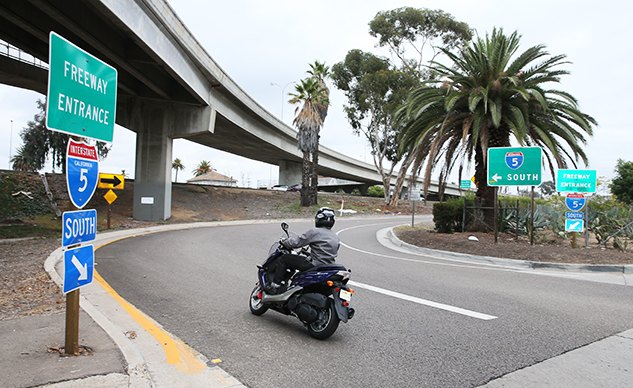
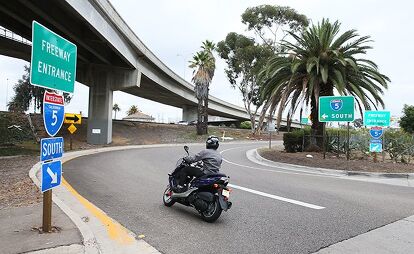


















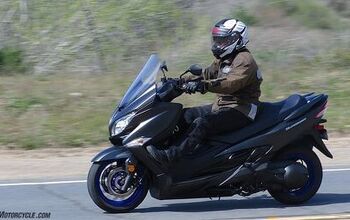


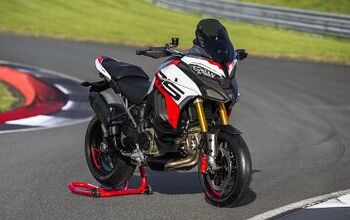












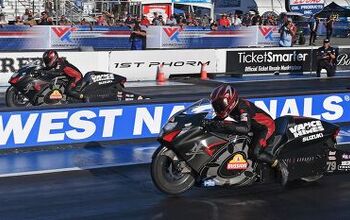

Comments
Join the conversation
The riders in your highway group riding photo are too close together for safety. And yes, I understand the need to stay that close together so you don't end up with cars in the middle of your pack. I personally find riding in any sort of group on the highway to be a pain, since you constantly have to be concerned about the whole group, keeping it together, etc.
For me, freeway riding is all about going fast enough to ride in the left lane without holding up traffic, while not going so fast as to attract LEO attention. Sometimes that means I have to go faster than I'd prefer to risk, or move over a lane and risk getting clobbered or clipped by cars going 90+ on either side of me. At best it's a challenging choreography; at worst it's 'Death Race 2019'. Even though -statistically - freeways are safer than intersections, you can't EVER relax into cruise mode on a bike. You must be applying positive control and thinking several moves ahead, at all times.